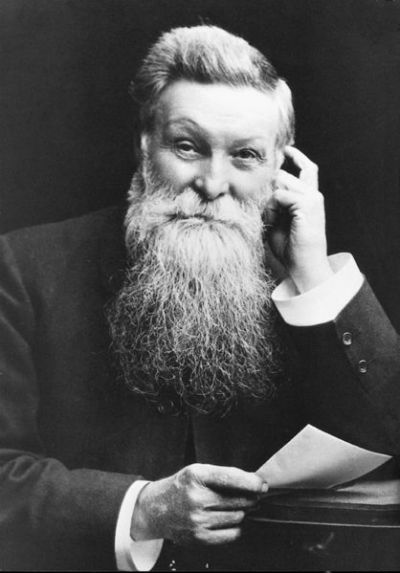 John Boyd Dunlop
John Boyd Dunlop
Ireland cycling: victories and honours
When Belfast hosts the opening stage of the Giro d'Italia in July 2014, this will not be the first time that Ireland cycling has been the focus of the attention of the international bicycle racing world. A similar honour was bestowed on the country when the first stages of the 1998 Tour de France were held in Munster and Leinster, partly to mark the bicentenary of the 1798 Rebellion.
One of the stages of the 1998 Tour was routed through Carrick-on-Suir, the home town of Sean Kelly, in recognition of that rider's achievements on the international racing stage in the 1980s, when, for several years, he was ranked as the world's best cyclist.
The 1980s also witnessed the stunning triumph of another Irish cyclist, Stephen Roche, who in 1987 became only the second rider in history to win cycling's 'Triple Crown' of victories in the Giro d'Italia, the World Road Race Championship and the Tour de France in the same year: the great Eddy Merckx is the only other cyclist to have achieved this feat.
Ireland, cycling, history, and rocky starts
Ireland cycling pioneers could never in their wildest dreams have imagined that their first tentative ventures awheel would, ultimately, set in train a transport and sporting revolution which made such achievements possible.
The first Irish bicyclists in the late 1860s and 1870s rode cumbersome velocipedes or 'boneshakers': these solid-tyred, two-wheeled machines were propelled slowly along Ireland's poorly maintained roads by the rider pushing pedals on the front wheel.
They were soon rendered obsolete by the development in the early 1870s of the Ordinary, popularly known as the 'Penny-Farthing'. Like the boneshaker, the Ordinary was propelled by the rider pushing pedals on the front wheel, but the sheer size of the Ordinary's large front wheel meant that each revolution of the pedals carried the rider much further and at much greater speed than was possible when riding a boneshaker.
Such high-wheeled machines were not for the timid: 'croppers' – the rider being pitched head first over the handlebars as a result of the front wheel striking a stone or getting stuck in a rut – were common when riding such machines, and sometimes fatal. The number of accidents to the self-styled 'Knights of the Wheel' who rode Ordinaries also increased due to the riders' belief that brakes were fit only for cowards!
The conventions regarding female clothing meant that it was physically impossible for women to ride such machines; if Irish women wished to cycle, most were restricted to riding much heavier, if safer and slower, tricycles, although a small number took to riding chain-driven ladies' safety bicycles towards the end of the 1880s.
Smooth operators: the pneumatic revolution in Ireland cycling
Most young Irishmen who cycled were dismissive of safety bicycles at first, viewing them as machines that were fit only for timid men or for women. As safety bicycles were initially solid-tyred machines, they were slower than Ordinaries, but John Boyd Dunlop's invention (or, more properly, rediscovery) of the pneumatic tyre in 1888 quickly changed this.
When William Hume of Belfast's Cruisers Cycling Club rode a pneumatic-tyred, chain-driven safety bicycle at the Queen's College sports on 18 May 1889, he was at first jeered by the onlookers and by other contestants, but Hume's easy victories over the Ordinary riders in the bicycle races signalled the beginning of a dramatic revolution in cycling in Ireland and abroad.
The success of the so-called 'Irish Brigade' of racing cyclists who triumphed in several races in England in 1890 while riding pneumatic-tyred bicycles, brought wider publicity for Dunlop's innovation. Almost overnight, Ordinaries and tricycles were obsolete, and the pneumatic-tyred, chain-driven safety bicycle reigned supreme in the cycling world.
The pneumatic tyre revolutionised cycling design by making it a much more accessible activity than it had been hitherto. Perhaps the most significant change that it facilitated was that of opening up the pastime to women on an unprecedented scale.
As the Weekly Irish Times commented on 13 July 1895, regarding developments in Dublin:
"The girls in town here are having the bicycle fever pretty badly – they are teasing their fathers and mothers and husbands and brothers to buy them a pneumatic steed, and those who have learned to ride, and some who haven't, may be seen whizzing in all directions about town."
The reference to cyclists 'whizzing in all directions' sums up one of the major effects of Dunlop's pneumatic tyre: when the Giro comes to Belfast, the riders should perhaps pause for a moment in gratitude to the local Scottish veterinarian whose genius helped to make the exciting sport that provides them with a living, before they themselves go 'whizzing in all directions'.
Rate and Review
Rate this article
Review this article
Log into OpenLearn to leave reviews and join in the conversation.
Article reviews